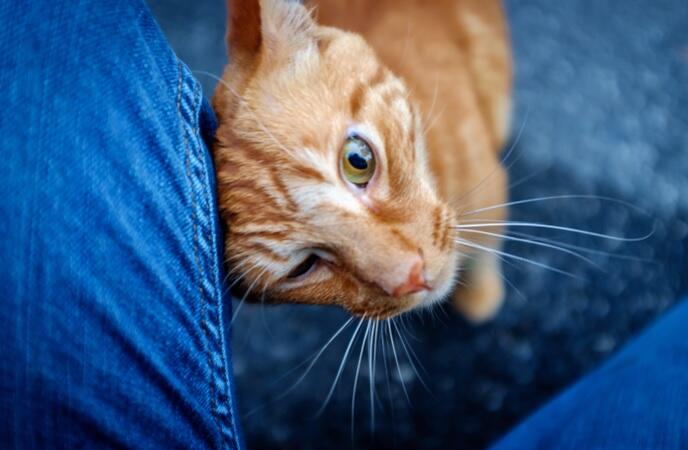A research group led by Professor Fumihide Tanaka of the Institute of Systems and Information Engineering at the University of Tsukuba, has announced that they developed a robot that bunted its head like a cat and had the potential to relieve tension in humans. The research group developed a robot that could dynamically change the flexibility of its neck, implemented movements that imitated those of cat bunting, and verified the effects of these movements. This effect is expected to be applied to therapy robots. The results are published in the December 24 issue of the international journal ACM Transactions on Human-Robot Interaction.

The behavior of felids rubbing their head against a subject is called bunting and is thought to be an expression of affection toward the subject; furthermore, touching animals has a healing effect on people. There are, however, few therapy robots that can perform the action of rubbing up against users such as bunting.
Taking a cue from the cervical vertebra structure of animals, the research group developed a flexible robot cervical vertebra and constructed a robot that could mimic the bunting behavior of cats. The cervical spine of the robot comprised four bone parts connected by joints, and the parts were joined by multiple silicone tubes and wires. The wires used were of two types: one for bending the cervical vertebrae and the other for providing stiffness, with each being controlled by independent servo motors. This mechanism enables bunting operation to be performed at three settings: (1) low stiffness setting, (2) high stiffness setting, and (3) variable stiffness setting.
In the experiment, 22 undergraduate and graduate students were asked to experience each of (1)-(3) bunting movements for 40 s, and their mood was subsequently evaluated. Assessments were made with the Temporary Mood Scale (TMS) questionnaire, which comprised six subscales, including tension, anger, etc. The TMS had three questions for each subscale and measured the respondent's mood through their responses to each question on a five-point scale.
Analysis of the results, focusing on the tension subscale, revealed that the participants' tension values decreased significantly after experiencing the bunting motion by the robot compared to before the experience. Although the highest tension reduction was observed in the variable stiffness setting, there was no statistically significant difference in the degree of reduction between the three settings (1)-(3). However, the participants also commented on the effectiveness of the variable stiffness setting, indicating the promising nature of the stiffness change in relieving tension.
Tanaka said, "This research focused on the variable stiffness of the neck, but in reality, there are various ways of approach (angle, speed, etc.) for animals to move close to us. In the future, we want to deepen our research in conjunction with the movement of the main robot body."
Journal Information
Publication: ACM Transactions on Human-Robot Interaction
Title: Development of a Robotic Device that Performs Head Bunting to Relieve User Tension
DOI: 10.1145/3700600
This article has been translated by JST with permission from The Science News Ltd. (https://sci-news.co.jp/). Unauthorized reproduction of the article and photographs is prohibited.




